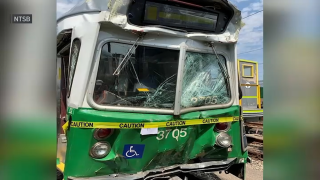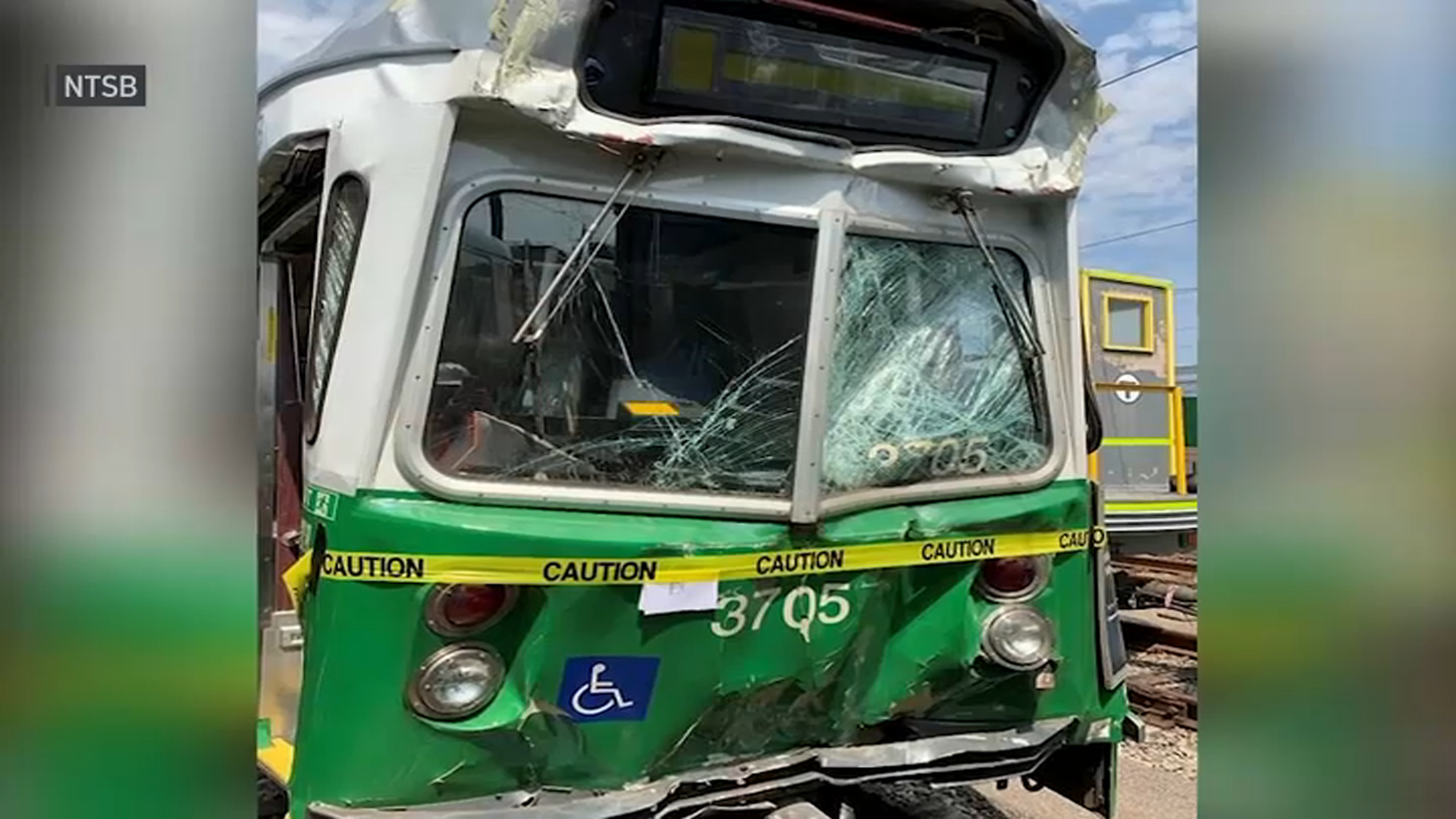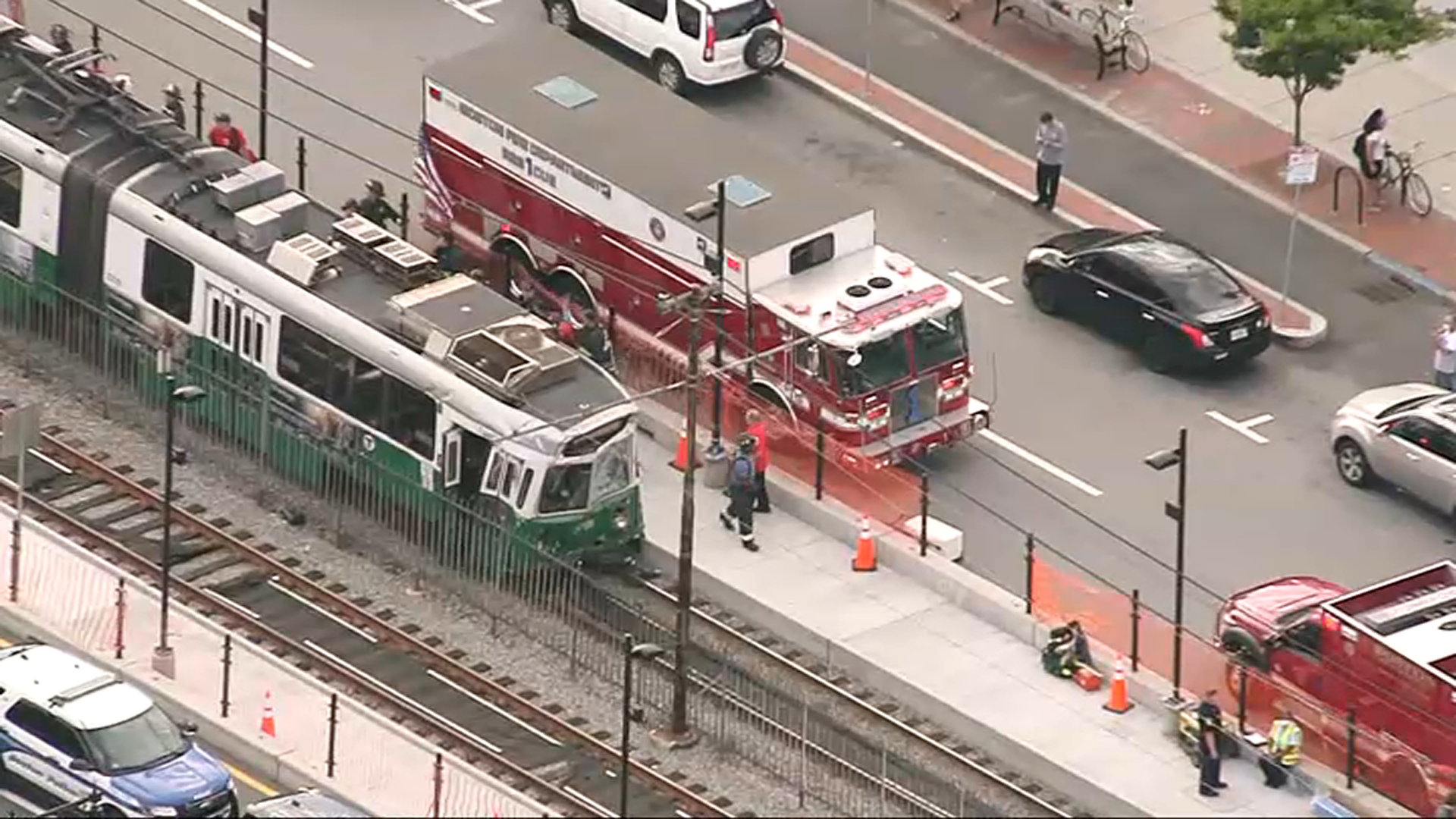
The operator of a light rail train that struck the rear of another train in Boston in the summer of 2021, sending 24 passengers and three workers to the hospital, told investigators that he blacked out and may have fallen asleep, according to a federal report.
The National Transportation Safety Board's report issued last month determined that the probable cause of the July 30, 2021 crash involving two Massachusetts Bay Transportation Authority Green Line trolleys was the operator's "loss of situational awareness" — which led to the trolley accelerating at full power to 33 mph.
WATCH ANYTIME FOR FREE
>Stream NBC10 Boston news for free, 24/7, wherever you are. |
The Green Line has a maximum authorized speed of 25 mph.
"The operator told NTSB he blacked out upon departing the St. Paul Street Station, possibly falling asleep," the report said. "The lack of any action by the operator to avoid the collision after departing the station suggests that he momentarily became unaware of his situation."
Get updates on what's happening in Boston to your inbox. Sign up for our >News Headlines newsletter.
Testing indicated that he was not impaired by alcohol or drugs, and investigators did not find any mechanical problems with his trolley.
The trains, each consisting of two coupled railcars, were both westbound. All the injuries were minor.
The lead trolley was traveling at about 10 mph at the time of impact. Both trolleys derailed, the report said.
More on this MBTA collision
The driver of the trolley that struck the other train had eight documented disciplinary actions for six policy violations, including two actions for a previous accident involving a car and two for speeding, the report said.
That operator has pleaded not guilty to negligence charges.
According to the report, the MBTA plans to have a system in place by June 2025 designed to prevent trolley-to-trolley collisions by enforcing speed policies and detecting collision threats.
The crash was one of several dangerous incidents that prompted a federal review of the light rail and subway system, and orders by the Federal Transit Administration to fix the problems.



